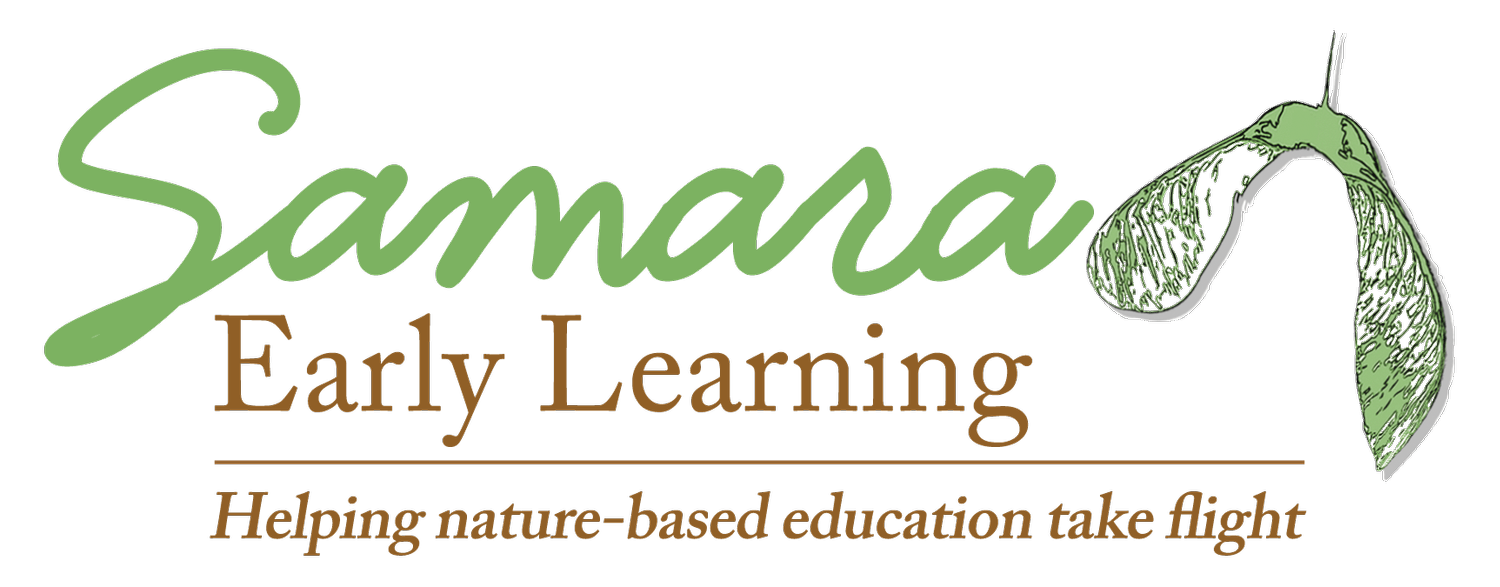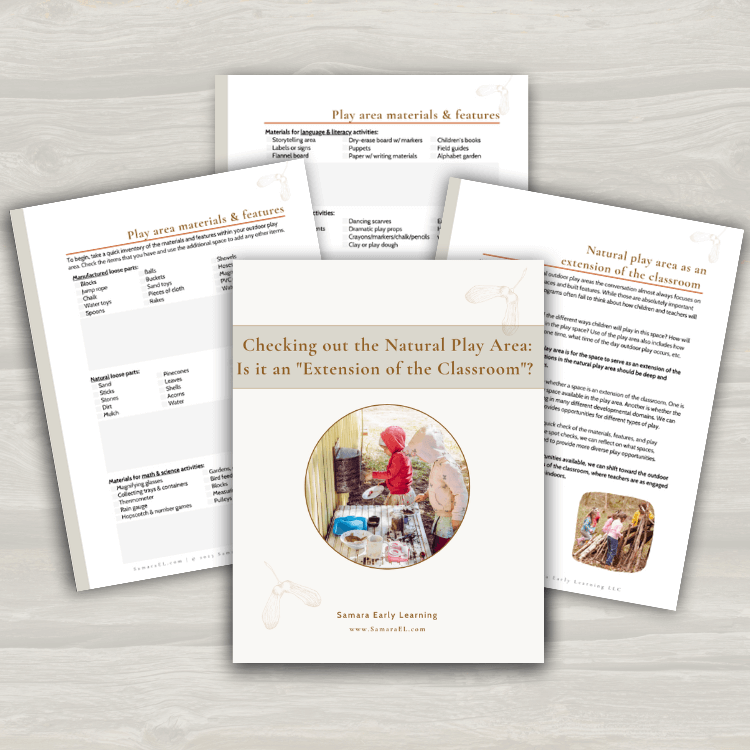Play area clarifications
This post originally appeared in Dr. Rachel A. Larimore’s weekly Samara newsletter on May 23, 2023. If you’re interested in receiving these emails, scroll to the bottom of this page to subscribe.
“There aren’t any other loose parts because it’s a natural play area.”
“We’re really happy it looks natural.”
I’ve heard versions of these two statements multiple times in the last several weeks. I found myself responding with “Yes, and…”
Let’s take a closer look at each statement:
🔎 “There aren’t any other loose parts because it’s a natural play area.” Yes, natural materials are important AND so are manufactured ones. The mix of natural and manufactured materials is important—particularly loose parts. For example, a mud kitchen with only mud and not bowls, muffin tins, whisks, and spoons is, well, kinda lame.
So, don’t feel that you must ban all plastic or manufactured materials from your natural play area. The key is selecting quality, open-ended materials that will support children’s play.
🔎 “We’re really happy it looks natural.” Yes, a play area should look natural AND it should function like and be influenced by nature. This means the play will change seasonally and in different weather because nature impacts the space. As the nature-based education movement grows there are more and more playgrounds that look natural, but function the same as a traditional playground–with few choices for play, minimal loose parts, and heavy emphasis on physical play rather than a mix of play types.
Ask yourself…How do the play opportunities in our natural play area change throughout the year? What influence do the plants, animals, and weather have on the play?
If you’d like to hear me share a bit more about this subject, check out my recent Instagram live. Not only will you hear about natural play areas, but you’ll get to see examples of my human imperfections. 🤣
Do you have other questions about natural play areas? Hit reply and let me know! In the meantime...
Keep changing lives,
Rachel
Rachel A. Larimore, Ph.D., Chief Visionary of Samara Learning
About Rachel
Dr. Rachel A. Larimore is an educator, speaker, consultant, author, and former nature-based preschool director. As the founder and Chief Visionary of Samara Early Learning her work focuses on helping early childhood educators start nature-based schools or add nature-based approaches into their existing program. Learn more about Rachel here.
Check out Rachel’s books Establishing a Nature-Based Preschool, Preschool Beyond Walls, Evaluating Natureness: Measuring the Quality of Nature-Based Classrooms in Pre-K through 3rd Grade, and her newest book Reimagining the Role of Teachers in Nature-based Learning: Helping Children be Curious, Confident, and Caring.
Need more help evaluating your outdoor play area?
You might find Checking on the Natural Play Area: Is it an “Extension of the Classroom”? a useful tool! The goal of a natural play area is to provide young children with opportunities for deep, extensive play and interactions with nature. To achieve this, it's important to reflect on the materials and play space available, and whether they support children's learning across different developmental domains.



